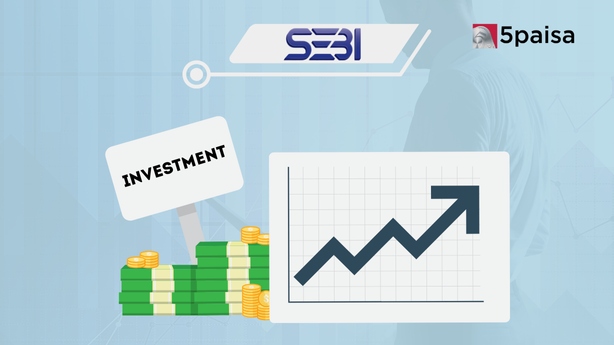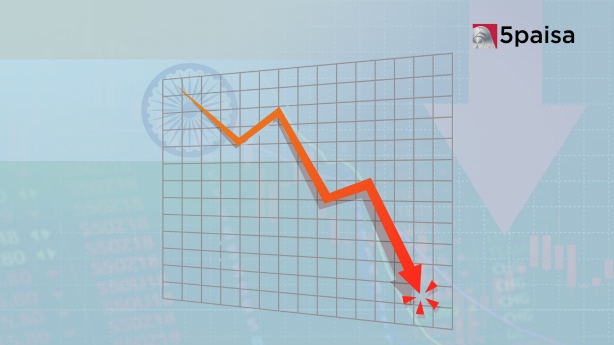Cable and Wire Stocks Decline for Second Session Amid Aditya Birla Group's Market Entry
SEBI adds Six New ESG MF Scheme Categories

ESG (environmental, social, governance) funds have picked up a lot of investor interest in the last few years. In fact, the pandemic was the period when investors actually realized the importance of investing in companies that are conscious of the environment, are good social citizens and follow high standards of corporate governance. That is what ESG Funds are all about. They invest in companies that display and demonstrate consistently high levels of ESG in their actions and their performance. Globally, the observation has been that such companies that meet the ESG criteria tend to outperform other classes of companies. But more on that later.
Why there is need for more ESG categories?
Currently, the ESG funds promoted by mutual funds are categorized under the broad header of sector / thematic funds. While there are limits on the number of thematic funds that an AMC can launch, each sub-category of thematic funds can just be one per AMC. Thus, each AMC could technically have only one ESG Fund. That is where the fund houses had been lobbying with SEBI for expanding the categories of ESG funds. That would give the AMC the opportunity to have a story for multiple NFOs over time. Also, the AUM of all ESG funds in India today is less than ₹10,000 crore.
That is almost paltry considering the opportunity that it offers. The idea of SEBI allowing 6 new categories of ESG MF schemes is to allow the fund houses to have more opportunities to float very granular and focused ESG schemes to tap very specific segments of the market. Only time will tell whether this will result in more funds flowing into the ESG sector and whether there would be enough funds meeting the criteria, but expanding the list of ESG funds to 6 is a good start.
What are the 6 categories of ESG Funds allowed by SEBI?
In order to expand the available thematic funds (with ESG Focus), the number of available themes have been expanded by SEBI from 1 to 6. Here are the 6 themes that mutual funds can now use.
Exclusion Theme:
Under this theme the fund can exclude securities based on certain ESG related activities, business practices etc. The strategy must ideally specify the type of exclusion with possible impact, conflict; the threshold or condition for exclusion, and the reference to applicable law/ regulation/ guideline/ framework used in the establishment or evaluation of the criterion.
Integration Theme:
Under this theme, the fund can (as a theme) explicitly consider ESG related factors that are material to the risk and return of the investment. This can be over and above the traditional financial metrics that are used in any prudent investment decision with a view to enhancing returns and minimizing risk.
Best-in-class Theme (positive screening theme):
This particular sub-theme of ESG aims to invest in companies that perform better than peers or outshine them on one or more performance metrics related to ESG matters. The details and specifications of such metrics should be explicitly disclosed.
Impact investing Theme:
This particular theme intends to generate a positive, measurable social or environmental impact alongside a financial return. Obviously, such social or environment impact must be quantifiable and explainable to be part of any fund template. Fund manager commentary must also provide ways and means of achieving the impact objective. Let us spend a moment on positive ESG impact. The methodology of the fund must clearly describe the process for identifying and avoiding, mitigating, or managing adverse effects that the scheme or underlying companies may be up against in the selection process.
Sustainable objectives Theme:
Under this theme, investment fund will seek to invest in sectors, industries, or companies that are expected to benefit from long-term macro or structural ESG-related trends. Again, these should be quantifiable and monitorable. Description of the focussed objective including rationale for focussing on that objective will be part of the requirements here.
Transition or transition related investments theme:
Under this theme, the said fund house aims to invest in companies and issuers that support or facilitate environmental transition. The investment should generate a positive and measurable social and environmental transition. This can be towards green energy, decarbonization etc.
Additional conditions that such ESG themes must meet
The SEBI note on the expansion of categories also outlines the conditions that must be met for such a new template to be up and running.
- Under each of the above themes, one AMC can launch only one ESG Fund. That means, any AMC can have a maximum of 6 ESG funds launched at any point of time. However, SEBI is quite clear that mis-selling and green washing should be totally avoided in such cases, something that could bring the fund under regulatory scrutiny.
- When a particular fund house / AMC opts for a specific strategy of ESG Fund, then the fund must ensure that at least 80% of the corpus of the fund is invested in equity and equity related instruments which meet the particular ESG theme. The fund manager will have discretion in allocation of the balance 20%.
- Currently, for the ESG category of funds, SEBI allows them to only invest in companies that have comprehensive Business Responsibility and Sustainability Reporting (BRSR) disclosures. Going ahead, the ESG scheme can invest at least 65% of their AUM in such BRSR compliant companies. This will give the fund managers more choice.
- The strategy of the ESG scheme cannot carry a generic name but instead must reflect the specific strategy in the name of the scheme. This will avoid any mis-selling by the brokers or misinterpretation of the fund objective by the investors. This is essential for all the mutual funds to adhere with respect to ESG schemes.
- The monthly portfolio disclosure must include security-wise BRSR score, including the name of the ERP providing such BRSR score. AMCs with ESG schemes will be mandatorily required to cast their votes in respect of all resolutions of all the investee companies to ensure that ESG standards are maintained and monitored. Such voting muse be disclosed by the fund too.
- Fund manager commentary in the monthly portfolio disclosure must also include how the ESG strategy was applied to the fund, escalation strategies where companies are falling short as well as any ESG rating movements. Engagements with companies on the ESG framework and the outcomes must also be reported in detail.
- The AMC must also ensure an independent reasonable assurance on an annual basis regarding the portfolio of their ESG schemes and their adherence to the themes mentioned or enshrined in the fund name. Board of the AMC must ensure and convince itself about the competence of such rating provides and ensure no conflict of interest.
This is a good start and will expand the pressure on companies to become more ESG compliant. It now remains to be seen how these themes take off from an investors perspective.
- Flat ₹20 Brokerage
- Next-gen Trading
- Advance Charting
- Actionable Ideas
Trending on 5paisa
02
 5paisa Research Team
5paisa Research Team
03
 5paisa Research Team
5paisa Research Team
04
 5paisa Research Team
5paisa Research Team
Indian Market Related Articles
Disclaimer: Investment in securities market are subject to market risks, read all the related documents carefully before investing. For detailed disclaimer please Click here.




